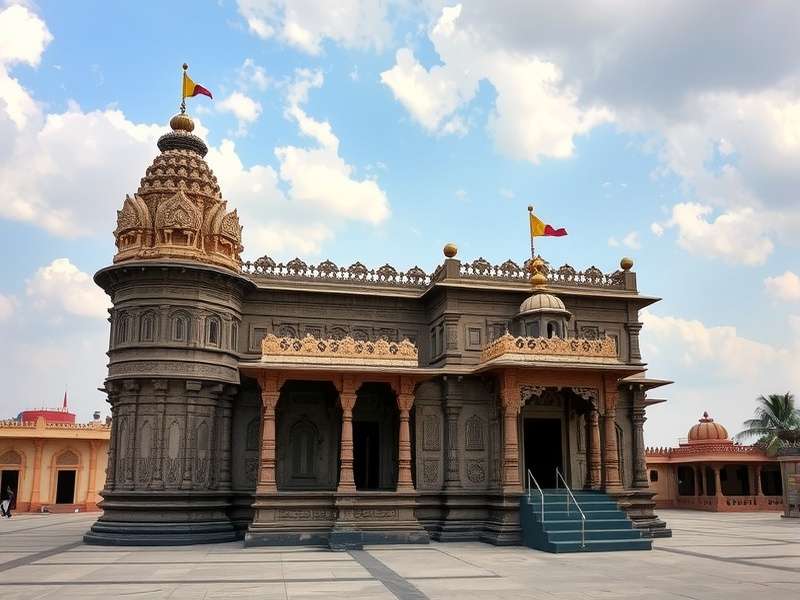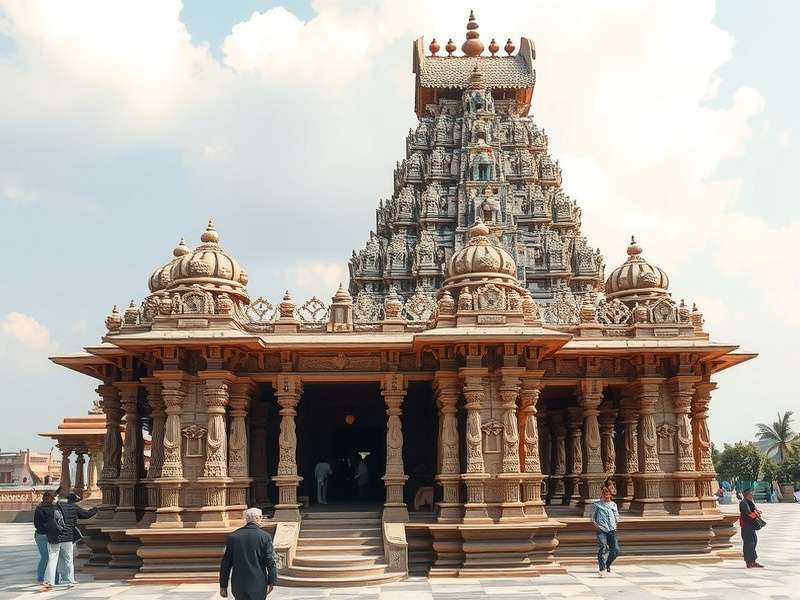Belur Temple Puzzle Genius: The Ancient Indian Brain Game 🧠✨
Discover the fascinating world of Belur Temple Puzzle Genius, an ancient mathematical puzzle game that has challenged minds for centuries in Karnataka, India.


Overview of Belur Temple Puzzle Genius 🎯
TheBelur Temple Puzzle Geniusis an ancient Indian mathematical puzzle that originated in the Hoysala Empire era, specifically associated with the famous Chennakesava Temple in Belur, Karnataka. This intellectual game combines elements of mathematics, strategy, and spatial reasoning in a unique format that has fascinated scholars and puzzle enthusiasts for generations.
What makes theBelur Temple Puzzle Geniusparticularly remarkable is its elegant simplicity coupled with profound complexity. The game appears straightforward at first glance, yet reveals layers of strategic depth as players advance. This characteristic has earned it the "Genius" designation among puzzle aficionados and historians alike.
Key Fact:The Belur Temple Puzzle Genius is not merely a game but a cultural artifact that reflects the advanced mathematical understanding of ancient Indian civilization, particularly in the areas of combinatorics and geometric progression.
Modern cognitive scientists have studied theBelur Temple Puzzle Geniusfor its potential benefits in developing logical thinking and problem-solving skills. The puzzle's structure engages multiple cognitive domains simultaneously, making it an excellent tool for mental exercise and development.
Historical Origins and Development 📜
The origins of Belur Temple Puzzle Genius can be traced back to the 12th century during the rule of the Hoysala Empire. Historical records suggest that the puzzle was initially developed by temple architects and mathematicians as both an educational tool and a form of intellectual entertainment for the royal court and scholarly communities.
Inscriptions found in the Belur Temple complex contain early references to mathematical games that bear striking resemblance to the modern understanding of theBelur Temple Puzzle Genius. These inscriptions indicate that the puzzle was used to teach mathematical concepts to young scholars in gurukuls (traditional Indian schools).
Temple Origins
Developed by Hoysala temple architects in 12th century Karnataka
Educational Tool
Used to teach mathematical concepts in traditional Indian education
Royal Entertainment
Popular among royalty and scholars as intellectual recreation
Throughout the centuries, the Belur Temple Puzzle Genius evolved through various regional interpretations while maintaining its core mathematical principles. The game survived multiple historical transitions, including the Vijayanagara Empire period and British colonial era, adapting to changing cultural contexts while preserving its essential character.
During the 19th century, British colonial administrators documented the puzzle in ethnographic studies of Indian games, noting its complexity and mathematical sophistication. However, it wasn't until the late 20th century that theBelur Temple Puzzle Geniusgained international recognition through the work of mathematics historians and puzzle collectors.

Game Rules and Mechanics 📐
The Belur Temple Puzzle Genius is played on a specially designed board with varying configurations, though the traditional version features a circular design divided into concentric rings with radial divisions. The game pieces, typically made of stone, wood, or ivory in historical versions, follow specific movement patterns based on mathematical sequences.
Basic Setup
The standard Belur Temple Puzzle Genius board consists of multiple concentric circles divided into segments by radiating lines from the center. The number of segments increases with each outer ring, creating a progressively complex playing field. Traditional versions feature 7 rings with prime number divisions (2, 3, 5, 7, 11, 13, 17 segments respectively).
Movement Rules
Pieces in the Belur Temple Puzzle Genius move according to Fibonacci sequence patterns, with each piece type having different movement capabilities. The core objective involves transferring all pieces from starting positions to designated target positions while navigating the mathematical constraints of the board.
Strategic Insight:Successful players of Belur Temple Puzzle Genius develop an intuitive understanding of number theory concepts, particularly those related to prime numbers and modular arithmetic, which govern piece movement and positioning.
Winning Conditions
A player wins the Belur Temple Puzzle Genius by being the first to arrange their pieces in a specific geometric pattern that matches pre-determined mathematical relationships. The winning configuration varies based on the specific variant being played but always reflects symmetrical and numerological principles derived from Hindu mathematical traditions.
Advanced versions of Belur Temple Puzzle Genius introduce additional constraints, such as time limitations, mandatory capture sequences, or special power pieces that alter the fundamental movement rules. These variations ensure the game remains challenging even for experienced players and mathematicians.
Advanced Strategies and Techniques 🏆
Mastering the Belur Temple Puzzle Genius requires developing sophisticated strategies that blend mathematical calculation with spatial intuition. Expert players often spend years refining their approaches to this complex game.
Mathematical Foundations
At its core, the Belur Temple Puzzle Genius is a mathematical game that rewards players with strong number sense. Key mathematical concepts that provide competitive advantages include:
- Modular arithmetic for predicting piece movements
- Prime number properties for strategic positioning
- Geometric progression for long-term planning
- Combinatorics for evaluating possible move sequences
Spatial Reasoning Techniques
Beyond pure mathematics, successful players of Belur Temple Puzzle Genius develop advanced spatial reasoning skills. The circular, multi-ring board requires thinking in radial and concentric patterns simultaneously, challenging conventional linear thinking approaches to strategy games.
Expert players often visualize the board as a series of interconnected mathematical relationships rather than discrete positions. This holistic approach allows for recognizing patterns and opportunities that less experienced players might miss.
Pro Tip:The most successful Belur Temple Puzzle Genius players maintain flexibility in their strategies, adapting to the emerging mathematical patterns of each unique game rather than rigidly following predetermined plans.
Psychological Elements
In competitive play, psychological factors become increasingly important in the Belur Temple Puzzle Genius. Since the game involves complete information (all pieces and possible moves are visible to both players), psychological advantage comes from predicting opponent thinking patterns and setting mathematical traps.
Advanced players learn to recognize their opponents' mathematical comfort zones and deliberately steer the game into areas that exploit computational weaknesses or pattern recognition gaps.
Cultural Significance and Modern Revival 🌍
The Belur Temple Puzzle Genius holds significant cultural importance beyond its mathematical and entertainment value. The game represents a living connection to India's rich intellectual heritage and serves as a testament to the sophisticated mathematical understanding achieved by ancient Indian civilizations.
Traditional Context
In its original cultural context, the Belur Temple Puzzle Genius was more than mere recreation. The game was intimately connected to temple architecture, astronomical calculations, and religious symbolism. The board design reflects cosmological principles found in Hindu temple architecture, with the concentric circles representing different planes of existence.
The mathematical relationships embedded in the game were seen as manifestations of cosmic order, making play a form of spiritual practice for some historical practitioners. This connection between mathematics, spirituality, and gameplay is a distinctive feature of traditional Indian intellectual games.
Modern Applications and Revival
In recent decades, there has been a significant revival of interest in the Belur Temple Puzzle Genius, both within India and internationally. Mathematics educators have recognized its value for teaching abstract mathematical concepts in an engaging, tactile format.
Cognitive researchers have studied the game for its potential benefits in developing mathematical thinking and problem-solving skills across age groups. Some studies suggest regular engagement with the Belur Temple Puzzle Genius can improve spatial reasoning, working memory, and logical deduction abilities.
Cultural Renaissance:The Belur Temple Puzzle Genius is experiencing a renaissance as part of broader efforts to preserve and celebrate India's intellectual heritage. Tournaments, educational programs, and digital adaptations are introducing this ancient game to new generations.
Global Recognition
Internationally, the Belur Temple Puzzle Genius has gained recognition among puzzle enthusiasts and mathematics historians. The game has been featured in academic publications, puzzle exhibitions, and international games conferences as an example of non-Western mathematical traditions.
Digital adaptations of Belur Temple Puzzle Genius have made the game accessible to global audiences, with mobile apps and online platforms allowing players worldwide to experience this unique aspect of Indian intellectual heritage. These digital versions often include tutorials and progressive difficulty levels to accommodate beginners while challenging experts.
The enduring appeal of Belur Temple Puzzle Genius across centuries and cultures testifies to the universal human fascination with mathematical patterns and strategic challenges. As both a historical artifact and living tradition, the game continues to inspire, educate, and entertain players around the world.
Conclusion: The Legacy of Belur Temple Puzzle Genius
The Belur Temple Puzzle Genius stands as a remarkable example of India's rich intellectual heritage, blending mathematical sophistication, strategic depth, and cultural significance in a unique gameplay experience. From its origins in Hoysala temple complexes to its modern digital adaptations, this ancient game continues to challenge and delight players with its elegant mathematical principles.
As interest in traditional games and mathematical puzzles grows globally, the Belur Temple Puzzle Genius offers valuable insights into non-Western mathematical traditions and their applications in recreational contexts. The game's enduring appeal across centuries demonstrates the timeless human fascination with pattern recognition, strategic thinking, and mathematical beauty.
Whether approached as a historical curiosity, an educational tool, or a competitive challenge, the Belur Temple Puzzle Genius remains a testament to the sophisticated mathematical understanding achieved by ancient Indian civilization and its continuing relevance in the modern world.